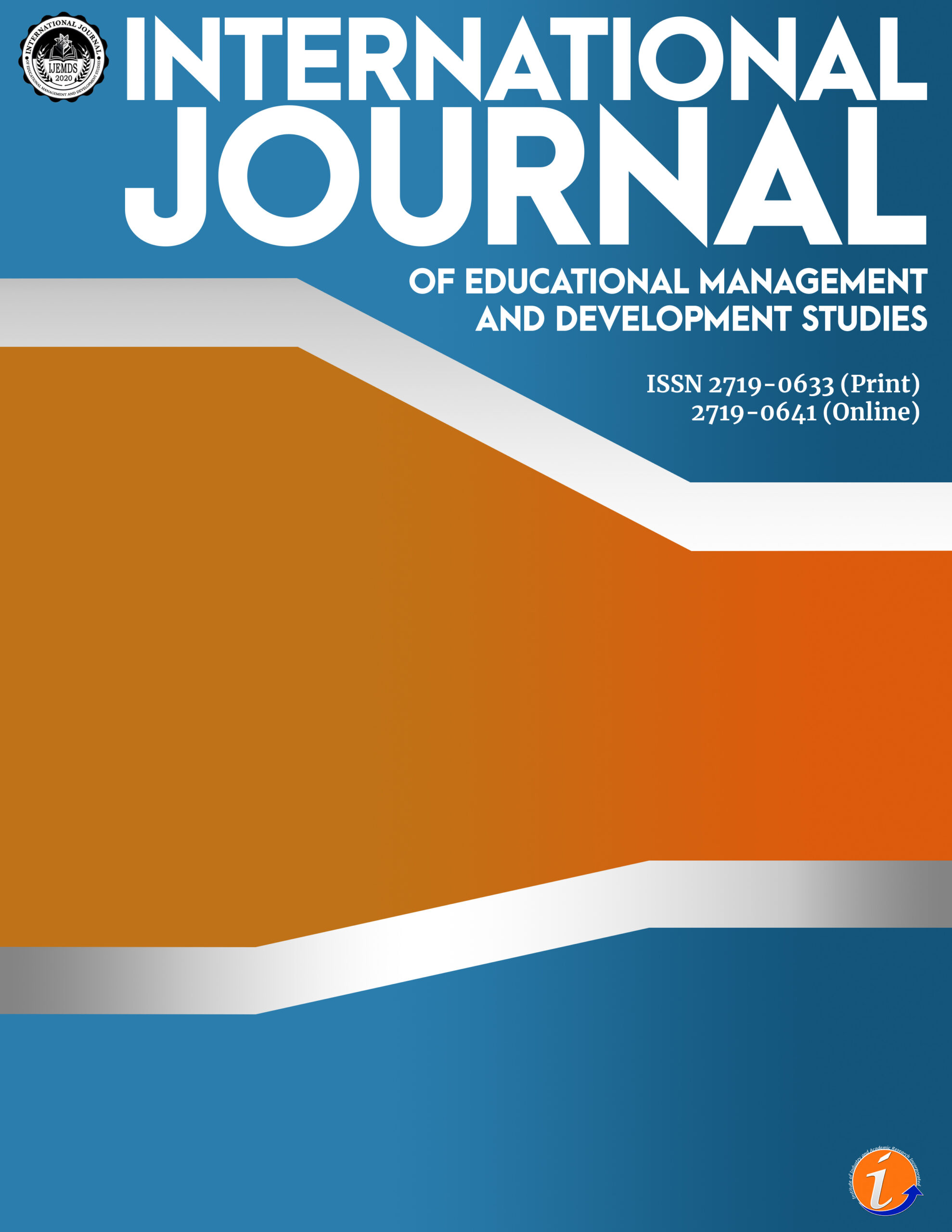In the ever-evolving landscape of education, the debate between traditional and modern instructional methods remains a focal point of discussion. The more technology is integrated into classrooms, the more it becomes imperative to scrutinize its effectiveness, especially in the foundational years of learning. Studying the association between multimedia tools and the consonant-vowel-consonant (CVC) reading performance of preschool English as Secondary Language (ESL) students is vital. The study explored the effectiveness of multimedia tools on CVC reading performance and interest and enthusiasm in phonics among Kindergarten Level 1 (K1) ESL students using a quasi-experimental design that lasted for eight weeks. Two enrolled classes were divided into traditional (14 participants) and multimedia groups (13 participants) according to their assigned classes. The study conducted a pre-test and post-test, comparing the two groups. The test questions were sourced from the school’s standardized assessments, ensuring validity and reliability. Data obtained were analyzed and interpreted using IBM SPSS Statistics. The findings revealed a partial enhancement in CVC reading performance and a notable increase in students' interest and enthusiasm for phonics, particularly in the participants’ positive attitudes. These improvements suggest a promising trajectory in the literacy development of young learners. Understanding which instructional method best supports foundational reading skills can provide valuable insights for educators and curriculum developers. This study is among the first to focus on early education, addressing a gap in research that predominantly targets older students. Nonetheless, it is essential to note that this study is limited to the K1 students enrolled in the research.
digital learners, English as a second language, instructional method, multimedia learning, reading comprehension
Rhazhiel Dominica P. Pesebre. BSEd, K2 Department, Embrace K.I.D. Lianyang Campus, Shanghai, China. Email: rachel@embrace-kid.com
Rosario F. Quicho. Ph.D., Department of Education Policy and Practice, Central Luzon State University, Philippines. Email: rosario_quicho@clsu.edu.ph
Leila M. Collantes. Ph.D., Department of Education Policy and Practice, Central Luzon State University, Philippines. Email: leilacollantes@clsu.edu.ph
Carlos N. Lamson Jr. Ph.D., Department of Early Childhood and Elementary Education, Central Luzon State University, Philippines. Email: iamsoncarlosjr_50@clsu.edu.ph
Jupeth T. Pentang. Corresponding author. Department of Science Education, Central Luzon State University, Philippines. Email: jupeth.pentang@clsu.edu.ph
No potential conflict of interest was reported by the author(s).
This work was not supported by any funding.
Abdulrahaman, M.D., Faruk, N., Oloyede, A. A., Surajudeen-Bakinde, N. T., Olawoyin, L. A., Mejabi, O. V., Imam-Fulani, Y. O., Fagm, A. O., & Azeez, A. L. (2020). Multimedia tools in teaching and learning processes: A systematic review. Heliyon, 6(11), e05312. https://doi.org/10.1016/j.heliyon.2020.e05312
Alhazbi, S., & Hasan, M. A. (2021). The role of self-regulation in remote emergency learning: comparing synchronous and asynchronous online learning. Sustainability, 13(19), 11070. https://doi.org/10.3390/su131911070
Bowers, J., & Bowers, P. (2017). Beyond phonics: The case for teaching children the logic of the English spelling system. Educational Psychologist, 52(2), 124-141. https://doi.org/10.1080/00461520.2017.1288571
Carlotta, C., Carmen, D., Simone, R., Maurizio, S., & Silvia, C. (2020). Smartphone-based answering to school subject questions alters gait in young digital natives. Frontiers in Public Health, 8, 187. https://doi.org/10.3389/fpubh.2020.00187
Chen, H., Wen, Y., & Jin, J. (2023). Computer-aided teaching and learning of basic elementary functions. Heliyon, 9(5), e15987. https://doi.org/10.1016/j.heliyon.2023.e15987
Chu, H.-C. (2014). Potential negative effects of mobile learning on students’ learning achievement and cognitive load—A format assessment Perspective. Journal of Educational Technology & Society, 17(1), 332-344. http://www.jstor.org/stable/jeductechsoci.17.1.332
Chuan-Yu, M., Jiyang, J., & Peiqi, J. (2022). Relationship between teachers’ teaching modes and students’ temperament and learning motivation in Confucian culture during the COVID-19 pandemic. Frontiers in Psychology, 13, Article 865445. https://doi.org/10.3389/fpsyg.2022.865445
Ciampa, K. (2012). Electronic storybooks: A constructivist approach to improving reading motivation in grade 1 students. Canadian Journal of Education / Revue Canadienne de l’éducation, 35(4), 92-136. http://www.jstor.org/stable/canajeducrevucan.35.4.92
Geudens, A., Sandra, D., Broeck, W. (2004). Segmenting two-phoneme syllables: Developmental differences in relation with early reading skills. Brain and Language, 90(1-3), 338-352. https://doi.org/10.1016/S0093-934X(03)00446-2
Islam, K. F., Awal, A., Mazumder, H., Munni, U. R., Majumder, K., Afroz, K., Tabassum, M. N., & Hossain, M. (2023). Social cognitive theory-based health promotion in primary care practice: A scoping review. Heliyon, 9(4). https://doi.org/10.1016/j.heliyon.2023.e14889
Kurent, B., & Avsec, S. (2023). Examining pre-service teachers’ regulation in distance and traditional preschool design and technology education. Heliyon, 9, e13738. https://doi.org/10.1016/j.heliyon.2023.e13738
Li, S., & Woore, R. (2021). The effects of phonics instruction on L2 phonological decoding and vocabulary learning: An experimental study of Chinese EFL learners, System, 103, Article 102677. https://doi.org/10.1016/j.system.2021.102677
Lukman, R., & Krajnc, M. (2012). Exploring non-traditional learning methods in virtual and real-world environments. Journal of Educational Technology & Society, 15(1), 237-247. http://www.jstor.org/stable/jeductechsoci.15.1.237
Maglhaes, S., Mesquita, A., Filipe, M., Veloso, A., Castro, S. L., & Limpo, T. (2020). Spelling performance of Portuguese children: Comparison between grade level, misspelling type, and assessment task. Frontiers in Psychology, 11, 547. https://doi.org/10.3389/fpsyg.2020.00547
Mann, V. A., & Foy, J. G. (2003). Phonological awareness, speech development, and letter knowledge in preschool children. Annals of Dyslexia, 53(1), 149-173. http://www.jstor.org/stable/23764738
Manohan, Arya & Jose, Jubil & Saji, Sneha. (2022). Teaching Alphabet Recognition and Letter Sound Correspondence Using a 4 Blocks of Literacy Model for Children with Complex Communication Needs (CCN): Illustrated with a Single Case Study. International Journal of Health Sciences and Research. 12. 99-104. https://doi.org/10.52403/ijhsr.20220114
Martirosov, A.L., Alex, J., Doane, A., Pater, R., Aprilliano, B., & Kale-Pradhan, P. (2023). Podcasts and videos and slides…oh my!: Traditional vs. non-traditional teaching methods in remote settings. Currents in Pharmacy Teaching and Learning, 15(6), 587-592. https://doi.org/10.1016/j.cptl.2023.06.007
McCoy, L. (2014). Web 2.0 in the Mathematics Classroom. Mathematics Teaching in the Middle School, 20(4), 237-242. https://doi.org/10.5951/mathteacmiddscho.20.4.0237
Mesfin, G., Ghinea, G., Grønli, T.-M., & Hwang, W.-Y. (2018). Enhanced agility of e-learning adoption in high schools. Journal of Educational Technology & Society, 21(4), 157-170. http://www.jstor.org/stable/26511546
Moskovsky, C., Jiang, G., Libert, A., & Fagan, S. (2015). Bottom-up or top-down: English as a foreign language vocabulary instruction for Chinese University students. TESOL Quarterly, 49(2), 256-277. http://www.jstor.org/stable/43893753
Mukti, N., & Hwa, S. P. (2004). Malaysian perspective: Designing interactive multimedia learning environment for moral values education. Journal of Educational Technology & Society, 7(4), 143-152. http://www.jstor.org/stable/jeductechsoci.7.4.143
Neo, M., & Neo, K. (2001). Innovative teaching: Using multimedia in a problem-based learning environment. Journal of Educational Technology & Society, 4(4), 19-31. http://www.jstor.org/stable/jeductechsoci.4.4.19
Ni, A., Cheung, A., & Shi, J. (2022). Effects of educational technology on reading achievement for Chinese K-12 English second language learners: A meta-analysis. Frontiers in Psychology, 13, 102576. https://doi.org/10.3389/fpsyg.2022.1025761
Ningsih, Wirda & Akhyar, Yundri & Puspita, Yenda (2023). Using CVC (Consonant Vowel Consonant) with picture media in teaching vocabulary for the young learner. Jurnal Ilmu Pendidikan. 1.1-19.
Ozerbas, M. A., & Erdogan, B. H. (2016). The effect of the digital classroom on academic success and online technologies self-efficacy. Journal of Educational Technology & Society, 19(4), 203-212. http://www.jstor.org/stable/jeductechsoci.19.4.203
Sigmundsson, H., Eriksen, A., Ofteland, G. S., & Haga, M. (2017). Letter-sound knowledge: Exploring gender differences in children when they start school regarding knowledge of large letters, small letters, sound large letters, and sound small letters. Frontiers in Psychology, 8, 1539. https://doi.org/10.3389/fpsyg.2017.01539
So, W. W. M., Chen, Y., & Wan, Z. H. (2019). Multimedia e-learning and self-regulated science learning: A study of primary school learners’ experiences and perceptions. Journal of Science Education and Technology, 28(5), 508-522. https://www.jstor.org/stable/48699328
Soltero-González, L. (2009). Preschool Latino immigrant children: Using the home language as a resource for literacy learning. Theory Into Practice, 48(4), 283-289. http://www.jstor.org/stable/40344656
Sophonhiranrak, S. (2021). Feature, barriers and influencing factors of mobile learning in higher education: A systematic review. Heliyon, 7(4), e06696. https://doi.org/10.1016/j.heliyon.2021.e06696
Sweller, J., van Merriënboer, J. J. G., & Paas, F. (2019). Cognitive architecture and instructional design: 20 years later. Educational Psychology Review, 31, 216-292. https://doi.org/10.1007/s10648-019-09465-5
Wang, S., & Lee, C.I. (2021). Multimedia gloss presentation: Learners’ preference and the effects on EFL vocabulary learning and reading comprehension. Frontiers in Psychology, 11, 602520. https://doi.org/10.3389/fpsyg.2020.602520
Yaftian, N., & Barghamadi, S. (2022). The effect of teaching using multimedia on mathematical anxiety and motivation. Journal of Research and Advances in Mathematics Education, 7(2), 55-63. https://doi.org/10.23917/jramathedu.v7i2.16141
Zhou, N., & Yadav, A. (2017). Effects of multimedia story reading and questioning on preschoolers’ vocabulary learning, story comprehension and reading engagement. Educational Technology Research and Development, 65(6), 1523-1545. http://www.jstor.org/stable/45018616
Cite this article:
Pesebre, R.D.P., Quicho, R.F., Collantes, L.M., Lamson, C.N. & Pentang, J.T. (2024). Effectiveness of multimedia tools in enhancing consonant-vowel-consonant reading performance and phonics interest and enthusiasm among kindergarten ESL students. International Journal of Educational Management and Development Studies, 5(4), 201-225. https://doi.org/10.53378/ijemds.353131
License:
![]()
This work is licensed under a Creative Commons Attribution (CC BY 4.0) International License.










